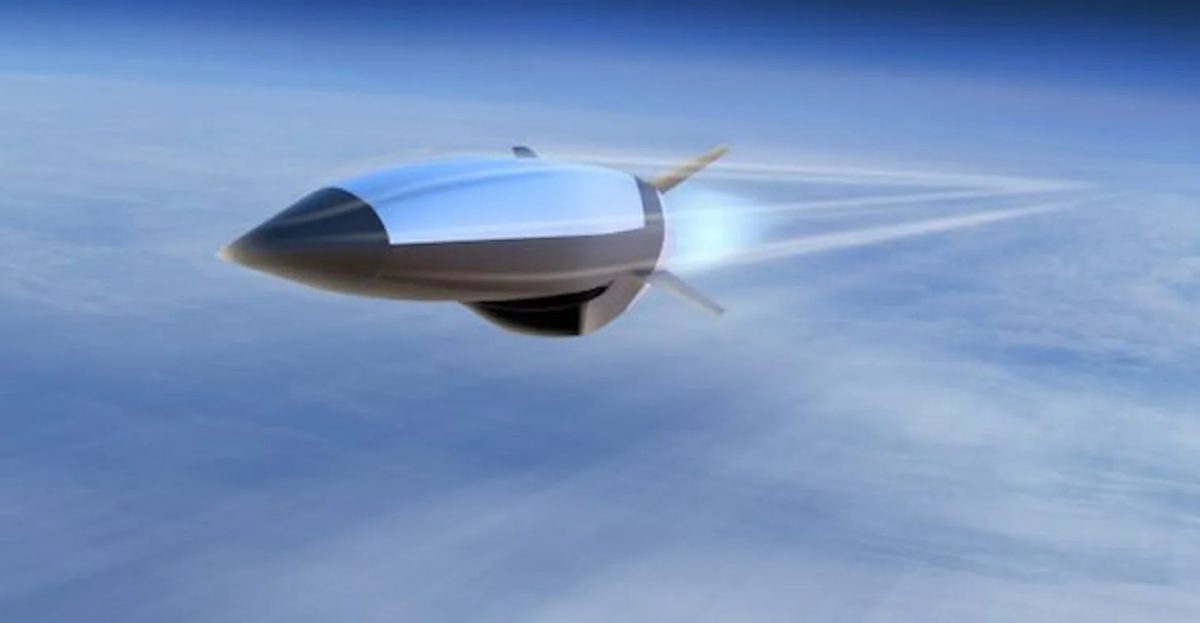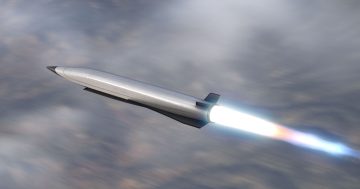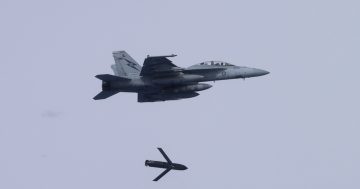
Concept art of the US Air Force’s Hypersonic Land Attack Missile (HACM). Image: US Air Force.
Australia, the UK and the US have agreed to accelerate hypersonic weapons technology research programs under the AUKUS Pillar II construct.
The agreement will see the development, testing and evaluation of hypersonic vehicles accelerated through various programs overseen by the Hypersonic Flight Test and Experimentation (HyFliTE) Project Arrangement (PA).
A joint statement says HyFliTE represents new heights of collaboration among AUKUS partners through shared testing facilities and pooling the partners’ deep collective technical expertise. To that end, HyFliTE aims to conduct up to six trilateral flight test campaigns by 2028.
The formalising of HyFliTE comes after September’s AUKUS Defence Ministers’ Meeting where it was flagged that the partner nations would add additional resources to the development and delivery offensive and defensive hypersonic weapon technologies.
Chief Defence Scientist Professor Tanya Monro said HyFliTE would leverage the collective expertise and innovation enterprises to deliver hypersonic capabilities at pace.
“This agreement will accelerate Australia’s sovereign ability to develop and deliver offensive and defensive hypersonic technologies – through a robust testing and experimentation campaign under AUKUS Pillar II,” she said.
In a separate statement, the US’s undersecretary of defense for research and engineering Heidi Shyu said, “We are increasing our collective ability to develop and deliver offensive and defensive hypersonic technologies through a robust series of trilateral tests and experiments that will accelerate the development of hypersonic concepts and critical enabling technologies.”
For the purposes of AUKUS, most of the hypersonic applications will be for air-, ground-, and sea-launched offensive strike weapons, able to overwhelm adversary defensive systems through their ability to manoeuvre and through sheer speed. Hypersonic denotes vehicles capable of exceeding five times the speed of sound in level flight, or about 5000 km/h.
But hypersonic technology will also have defensive applications, as it will also be needed to defeat adversary hypersonic weapons.
The Australian Defence Force previously had a project designated AIR 6503 which would be an adjunct to the larger AIR 6500 Joint Air Battle Management System (JABMS), and was designed to specifically deal with high-speed missile threats including ballistic missile warheads.
But that project appears to have been folded into the AIR 6502 medium-range ground-based air defence (MRAD) system which the ADF says is designed to “deliver a ground-based, middle-layer, area air defence capability, designed to deter, deny and/or defeat air and missile threats”.
Sitting below AIR 6502 is the Australian Army’s Project LAND 19 Phase 7B E-NASAMS system currently entering service which is armed with radar-guided AIM-120C-7 AMRAAM missiles with a range of about 70 km, and infrared-guided AIM-9X missiles with a range of about 25 km.
The US already has a number of hypersonic weapons programs underway and, while it understandably doesn’t openly discuss them, few if any are believed to have advanced to an operational capability.
In June it was flagged that Royal Australian Air Force F/A-18F Super Hornets and the Woomera Test Range in South Australia would be used for test launch duties for a US program, likely the US Air Force’s RTX Hypersonic Land Attack Missile (HACM), a two-stage air-launched missile.
While the US has several major weapons test ranges dotted around its coastline and in the southwestern states of Nevada and New Mexico, none have the space, remoteness and lack of airspace restrictions as Woomera or the Delamere and Bradshaw ranges in the Northern Territory.
The US has said HACM would likely be integrated with the joint US-Australian Southern Cross Integrated Flight Research Experiment (SCIFiRE) program.
Australia’s hypersonic weapon ambitions has been repeatedly restated in recent years, most recently by Defence Industry and Capability Delivery Minister Pat Conroy when he launched the Federal Government’s Guided Weapons and Explosive Ordnance (GWEO) Plan on 30 October.











